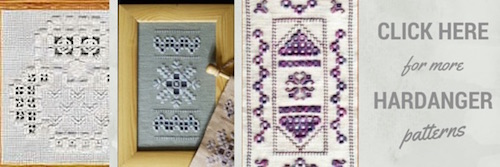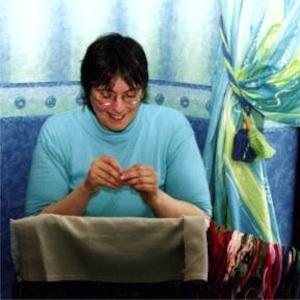- Home
- Lesson One
Hardanger needlework course - lesson one
Welcome to lesson one in my Hardanger needlework course.
We’ll stitch together step by step, so you can learn this beautiful Norwegian needlework with confidence.
Traditionally, Hardanger is stitched in white thread on white fabric.
But if you’re just starting out, try using coloured threads instead. It’s easier to see your stitches and gives your work a pretty, modern twist.

What materials do I need?
- 6" square of Hardanger 22 count fabric
- pearl cotton no 8 (1 ball)
- pearl cotton no 5 (1 skein)
- Tapestry needles, sizes 22 and 24
- A small wooden embroidery hoop
You can find the right supplies in the embroidery needles and hoops sections.
Hardanger pattern - stage 1
Here’s the chart we’ll be working from.
My Hardanger charts use a grid where each line represents one fabric thread.
Some designers use a scale where one line = two threads, so always check before starting a new pattern.
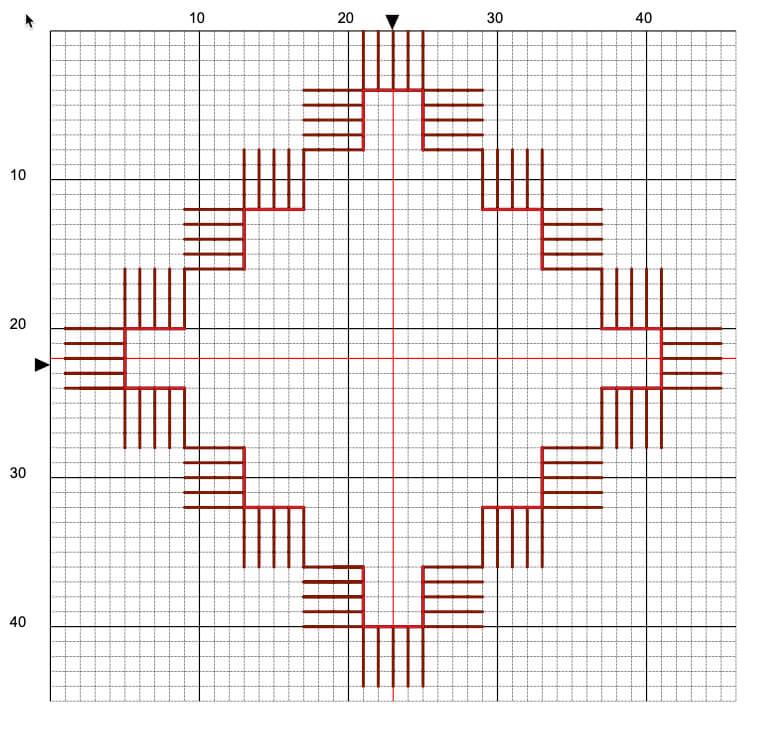
How To Stitch Kloster Blocks
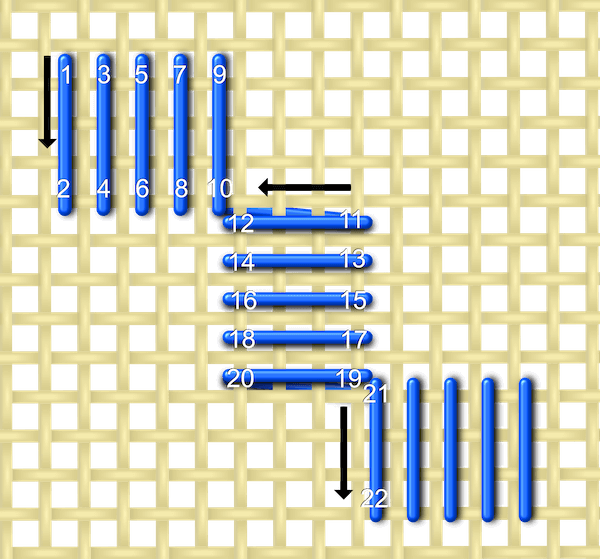
Let’s begin!
Start by finding the centre of your fabric. Fold it in half both ways and gently crease it.
Thread your needle with the thicker no. 5 thread. Yes, you’ll use a knot this time!
Use an away waste knot. Pop your needle in from the front corner of your fabric and leave the knot on top. You’ll snip it off later.
Count 18 threads up from the centre. Bring your needle up at position 1 on the chart.
Work your first Kloster block. Each satin stitch covers 4 fabric threads.
Tip: Follow the numbers on the chart carefully. This helps keep the thread distribution even on the front and back.
If you skip a number or take a shortcut, your stitches might not hold when it’s time to cut.
Once the first block is done, continue to block two at a right angle. Reuse hole 10 for stitch 11–12, and hole 20 for the next corner. This prevents messy diagonal threads across open spaces.

The video above shows the kloster block and cutting processes
Continue stitching around until the diamond is complete.
Now go back and snip off that waste knot. Check that your stitches secured the thread underneath.
Running out of thread? Try to finish a full block before changing lengths. Mixed thread can show a difference in sheen.
To end a thread, weave under 3 Kloster blocks, turn, and weave back, skipping the first stitch.
If you’ve reached this point—congratulations! You’ve already stitched one of the most important foundational techniques in Hardanger.
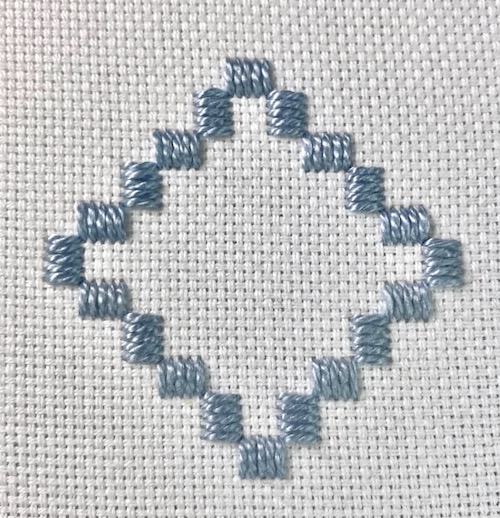 Photo showing the stitched kloster block diamond
Photo showing the stitched kloster block diamondCutting the Threads in Hardanger Needlework
Take a deep breath. This is where it gets exciting!
You’ll need very sharp, pointed embroidery scissors.
Avoid using large dressmaker shears or dull scissors—they just won’t give the control you need.
If you plan to stitch more Hardanger in the future, it’s worth investing in angled-blade scissors.
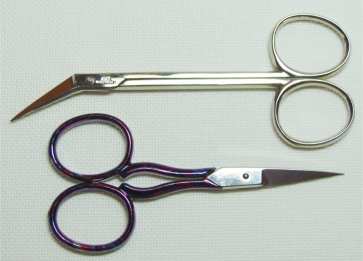
Look at the cutting chart below. The red lines show exactly where to cut—always along the edge where stitches go down into the fabric.
Never cut parallel to the stitches.
Count carefully. Count again. Then snip all four threads at once.
If you accidentally cut an extra thread, don’t panic! You can reweave a new thread from the edge of the fabric. It takes time, but it works.
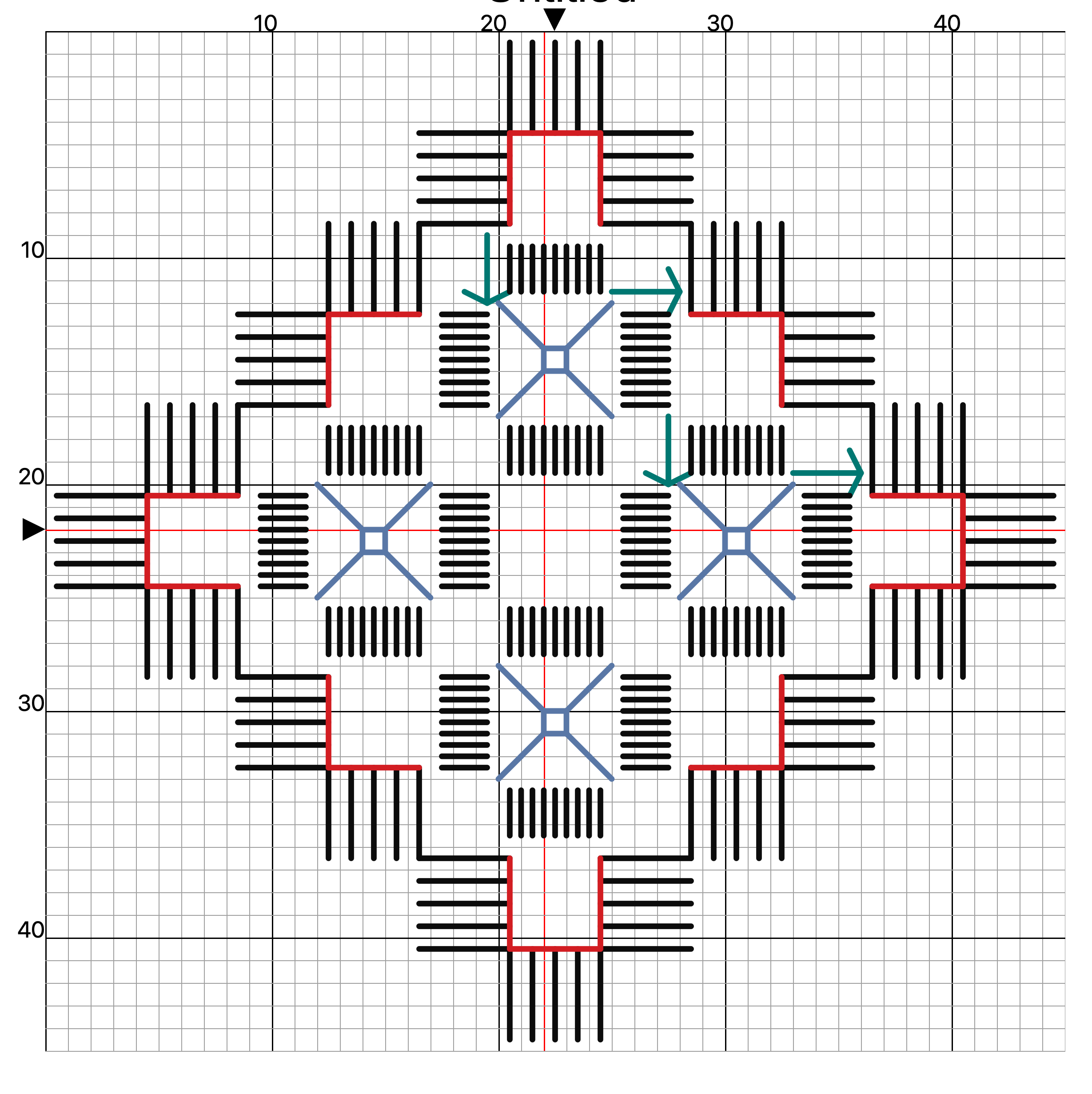
Use tweezers or your fingers to gently remove the cut threads. You’ll be left with a grid of empty spaces.
If you see tiny tufts of fabric, don’t worry. These will shrink back under the Kloster blocks when you wash the piece.
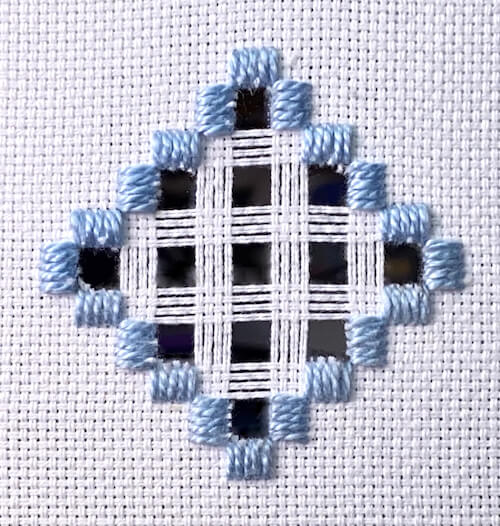
How To Do Needleweaving In Hardanger
Time to switch to the finer pearl cotton no. 8.
You’ll use this for all the needleweaving and the decorative square filets.
Start by anchoring your thread under a Kloster block—no need for a knot here.
Each open space has 4 threads in place. Weave over two, under two, and repeat until the bar is full. Don’t overcrowd the stitches.
Try to use the same number of stitches on each bar for a consistent look.
Start with the red-marked bars. Then turn your work and fill in the others diagonally.
If you are using Oslo fabric, look closely. Each "thread" is actually two fine side-by-side threads, woven in the same manner. Treat them as one thread.
We call this process needleweaving. Many Hardanger needlework patterns will use this technique, but some will have wrapped bars (which we will cover in lesson two of our beginner guide to hardanger.
Work the bars in a diagonal direction by working those coloured red on the chart first. Then turn the work and work a second diagonal row in the opposite direction.
Continue until you have worked all the remaining bars.
Hardanger Square Filet Tutorial
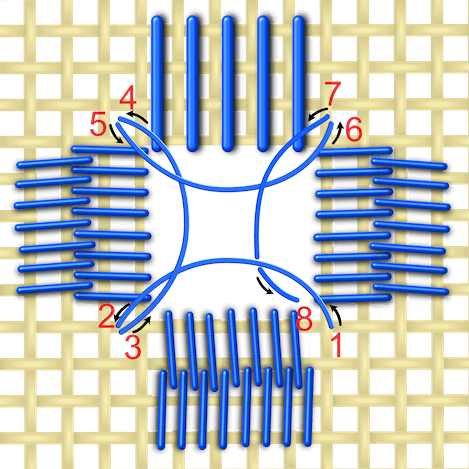
This is the final step in this project!
The square filet is a small, lacy stitch that adds lovely detail to the open spaces.
You’ll stitch four buttonhole stitches—one into each corner of the square.
On the fourth stitch, wrap it over the thread that’s already there to keep everything even.
Anchor your thread between square filets by running it under nearby Kloster blocks.
You Did It!
Take a look at your finished piece. You stitched:
- A full diamond of Kloster blocks
- Neatly trimmed openwork
- Evenly needlewoven bars
- Decorative square filets
That’s a huge first win—and just the beginning!
Explore more lessons in the Learn Hardanger course, or check out downloadable Hardanger patterns to keep going.
Happy stitching!
Stay connected between projects
If you’d like occasional updates from my embroidery room, including new patterns, gentle tips, and little things I think you might enjoy, you’re warmly invited to join the Stitchin’ Times newsletter.
No pressure. Just a friendly note now and then to keep you inspired.
